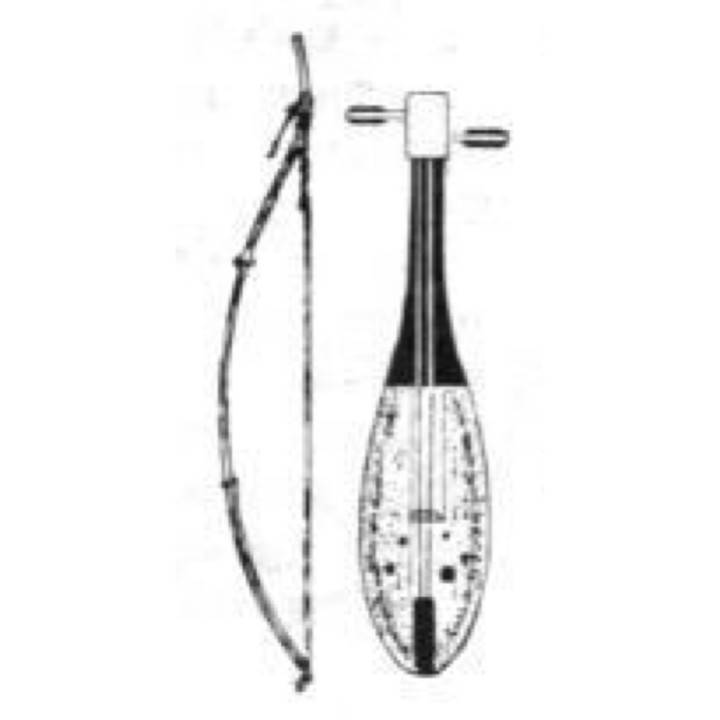bow overview
 Bow Qin (pinyin: gōng qín) is a bowed qin plucked stringed musical instrument. It has a long history, primitive shape, soft pronunciation and beautiful timbre. Often used to accompany folk songs or dances. It is popular in the Bunun, Zou and other ethnic inhabited areas among the aborigines in Taiwan.
Bow Qin (pinyin: gōng qín) is a bowed qin plucked stringed musical instrument. It has a long history, primitive shape, soft pronunciation and beautiful timbre. Often used to accompany folk songs or dances. It is popular in the Bunun, Zou and other ethnic inhabited areas among the aborigines in Taiwan.Bowqin has a very long history. It was born out of the ancient hunting bow and can also be called "music bow". It is the ancestor of my country's stringed musical instruments. In the Qing Dynasty, Zhu Jingying wrote about the bowed qin in "Notes on Haidong" (Volume 4): "The bow is cut from bamboo, more than a foot long, or seven or eight inches, with a silk thread as a string, and one end is folded with a thin bamboo piece and looped around its end. , under the string near the tail, the end stack is tied to the bow surface, buckled to the teeth, and the string of the claws is used to make a sound, which is called the meat." It still maintains its original form.
The bow is popular among the Gaoshan people. The back of the bow is mostly made of bamboo slats, which are generally 70 cm long and 17 mm wide. It is also made of bamboo grass roots. After bending it into a bow shape, both ends are stretched with plant strings or metal strings. made. The bowed qin is a stringed instrument, a popular instrument of the Bunun people, and also the most important solo instrument.
- Chinese name:bow
- nationality:Gaoshan people
- feature:Soft pronunciation, pleasant tone
- Attributes:plucked musical instrument
overview of other similar instruments
- sanyanxiao overview
- Daguangxian overview
- Leiqin overview
- hahao overview
- yandundagu overview
- Han Xiaozheng overview
- Fang Xiang overview
- guanzi overview
- zhuqin (Dao Qin) overview
- zhuiqin overview
- bangzi overview
- three-stringed piano overview
- Gehu overview
- xiao overview
- xiaokonghou overview
- Konghou overview
- Sheng overview
- suona overview
- hulusi overview
- gushao overview
 渝公网安备 50010702504639号
渝公网安备 50010702504639号